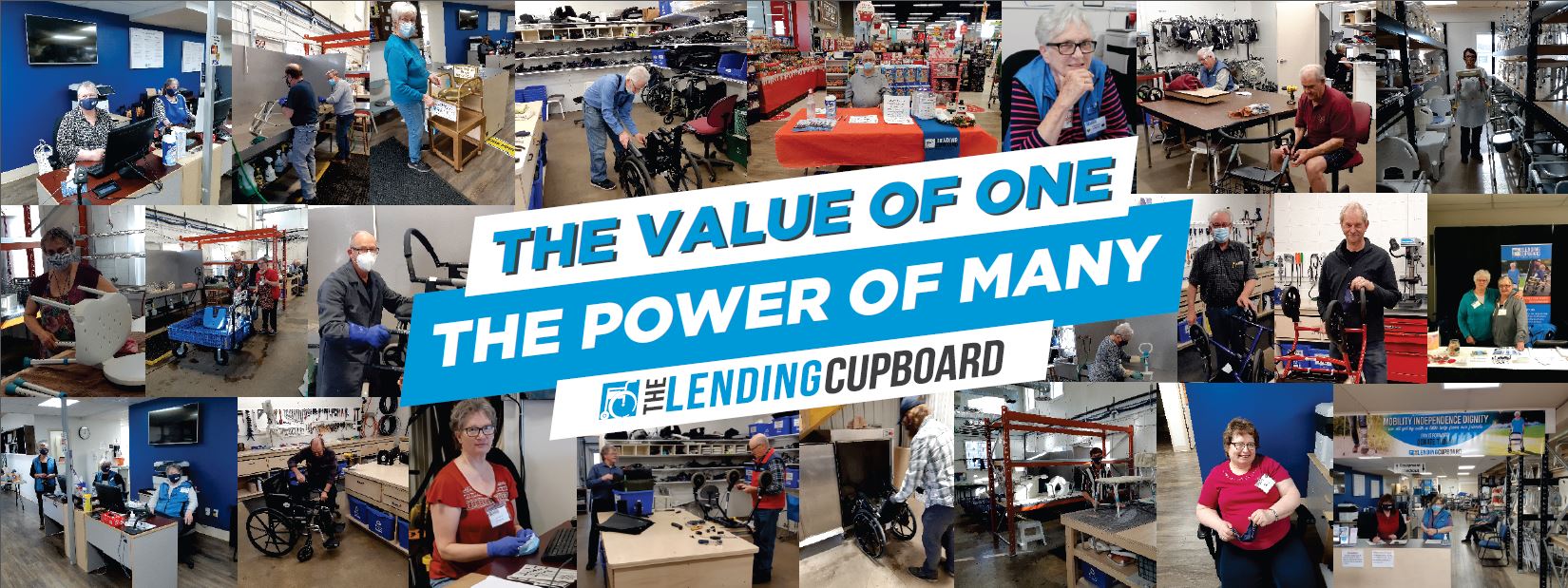Community
The Lending Cupboard gears up to celebrate National Volunteer Week!

Staff members at The Lending Cupboard are gearing up to celebrate our volunteers in a big way during National Volunteer Week (April 24 – 30).
It’s no secret that our mission to provide medical equipment to Central Albertans couldn’t be done without our dedicated team of volunteers who give so generously of their time.
“I have never experienced the kind of compassion, commitment and just overall empathy that we have with our volunteers here at The Lending Cupboard,” said Dawna Morey, executive director. “They are here to give so freely of themselves to perfect strangers in our community who are in need. We are talking about easily 10,000 volunteer hours per year.
“And they come back week after week, and some of them have been volunteering here at TLC for years!”
Morey noted that TLC staff will be celebrating National Volunteer Week with special lunchtime celebrations for our people. “Without the dedication and commitment of our volunteers, TLC would not be able to provide the high level of service it does,” said Brenda Radu, TLC’s volunteer coordinator. “From the very first day I started, this dedicated team has shown me what compassion, empathy and commitment means. They really care about TLC and the people it serves.”
Morey also noted that while it’s vital to recognize volunteers all year long, “It’s even more important that we and the community celebrate both our volunteers and the other volunteers in the community during National Volunteer Week.
“We hear a lot about volunteerism in our community, and without a doubt we have a strong sense of it across the region,” she said. “It’s strong because we know that when we give, we certainly get so much in return for it. We just can’t thank them enough.”

Community
Support local healthcare while winning amazing prizes!

|
|
|
|
|
|
|
Community
SPARC Caring Adult Nominations now open!

Check out this powerful video, “Be a Mr. Jensen,” shared by Andy Jacks. It highlights the impact of seeing youth as solutions, not problems. Mr. Jensen’s patience and focus on strengths gave this child hope and success.
👉 Be a Mr. Jensen: https://buff.ly/8Z9dOxf
Do you know a Mr. Jensen? Nominate a caring adult in your child’s life who embodies the spirit of Mr. Jensen. Whether it’s a coach, teacher, mentor, or someone special, share how they contribute to youth development. 👉 Nominate Here: https://buff.ly/tJsuJej
Nominate someone who makes a positive impact in the live s of children and youth. Every child has a gift – let’s celebrate the caring adults who help them shine! SPARC Red Deer will recognize the first 50 nominees. 💖🎉 #CaringAdults #BeAMrJensen #SeePotentialNotProblems #SPARCRedDeer
s of children and youth. Every child has a gift – let’s celebrate the caring adults who help them shine! SPARC Red Deer will recognize the first 50 nominees. 💖🎉 #CaringAdults #BeAMrJensen #SeePotentialNotProblems #SPARCRedDeer
-

 Alberta6 hours ago
Alberta6 hours agoAlberta Independence Seekers Take First Step: Citizen Initiative Application Approved, Notice of Initiative Petition Issued
-

 Crime5 hours ago
Crime5 hours agoNational Health Care Fraud Takedown Results in 324 Defendants Charged in Connection with Over $14.6 Billion in Alleged Fraud
-

 Health4 hours ago
Health4 hours agoRFK Jr. Unloads Disturbing Vaccine Secrets on Tucker—And Surprises Everyone on Trump
-

 Bruce Dowbiggin7 hours ago
Bruce Dowbiggin7 hours agoThe Game That Let Canadians Forgive The Liberals — Again
-

 Agriculture2 days ago
Agriculture2 days agoCanada’s supply management system is failing consumers
-

 Alberta1 day ago
Alberta1 day agoCOVID mandates protester in Canada released on bail after over 2 years in jail
-

 Crime2 days ago
Crime2 days agoProject Sleeping Giant: Inside the Chinese Mercantile Machine Linking Beijing’s Underground Banks and the Sinaloa Cartel
-

 Alberta1 day ago
Alberta1 day agoAlberta uncorks new rules for liquor and cannabis









